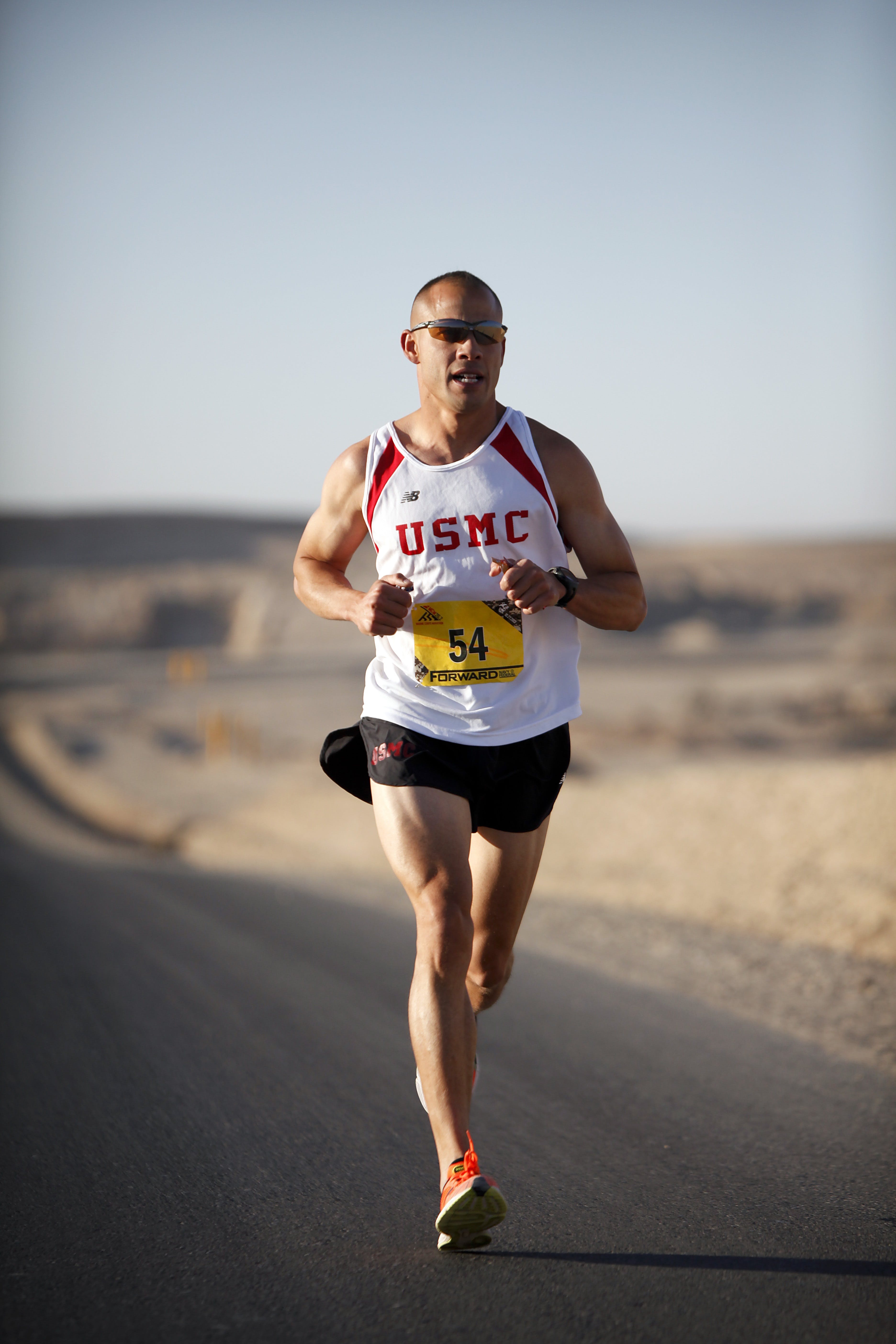Plantar fasciitis is a common injury among runners, characterized by *pain and inflammation* of the plantar fascia, a thick band of tissue that runs across the bottom of your foot and connects your heel bone to your toes. This condition can cause severe discomfort, making every step a painful experience and potentially sidelining you from your running routine.
The primary *cause of plantar fasciitis* in runners is repetitive stress placed on the plantar fascia. This often results from poor running technique, inadequate footwear, or sudden increases in training intensity. Recognizing the early signs, such as a stabbing pain in the heel that is usually worse in the morning, can help you address the issue before it becomes more severe.
Understanding the mechanics behind plantar fasciitis is crucial for prevention. The plantar fascia supports the arch of the foot and absorbs shock when you run. Excessive stress or strain can cause tiny tears in the fascia, leading to irritation and inflammation. Factors such as overpronation (when your foot rolls inward too much), tight calf muscles, and running on hard surfaces can exacerbate this condition.
To stay ahead of this painful condition, it’s essential to adopt proper running techniques and make informed choices about your footwear and training regimen. **Visit our website to learn more and get started today!** Click here.
Importance of Proper Footwear
Wearing the right footwear is *essential* when it comes to preventing plantar fasciitis and ensuring a comfortable running experience. The shoes you choose can significantly impact your foot’s health by providing the necessary support, cushioning, and stability.
**Proper running shoes** are designed to accommodate the natural movements of your feet while running. They offer adequate arch support, which is crucial for distributing pressure evenly across your foot and reducing the strain on the plantar fascia. Additionally, well-cushioned shoes can absorb the shock from each step, minimizing the impact on your heels and reducing the risk of inflammation.
When selecting running shoes, consider your foot type and running style. For instance, if you have flat feet or overpronate, opt for shoes with extra arch support and motion control features. Conversely, if you have high arches, choose shoes with ample cushioning to enhance shock absorption. It’s also vital to replace your running shoes regularly, as worn-out shoes lose their supportive and cushioning properties over time.
*Inadequate footwear* can lead to biomechanical imbalances, putting extra stress on your plantar fascia and increasing the likelihood of injury. Therefore, investing in a pair of high-quality running shoes tailored to your specific needs is a step towards preventing plantar fasciitis and enjoying pain-free runs.
Correct Running Form to Prevent Injury

Maintaining *correct running form* is paramount to avoiding injuries like plantar fasciitis. The way you run can either alleviate or exacerbate the strain on your feet, so it’s crucial to pay attention to your running mechanics.
Firstly, focus on your **posture**. Keep your head up, back straight, and shoulders relaxed. This helps maintain balance and reduces unnecessary stress on your lower limbs. Your arms should swing naturally at your sides, bent at a 90-degree angle, which helps in propelling you forward without wasting energy.
**Foot strike** is another critical aspect. Aim for a midfoot strike rather than a heel strike. Landing on your midfoot allows for better shock absorption and reduces the impact on your heels and arches. A heel strike, on the other hand, can cause excessive force to travel up your leg, potentially leading to plantar fascia strain.
**Cadence**, or the number of steps you take per minute, also plays a role in preventing injuries. A higher cadence, typically around 170-180 steps per minute, encourages shorter, quicker strides. This reduces the time your foot spends in contact with the ground, decreasing the strain on your plantar fascia.
Lastly, be mindful of your **stride length**. Overstriding can lead to a heel strike and increased impact forces. Instead, aim for shorter, more controlled strides that align with your body’s center of gravity. This technique helps in maintaining a smoother and more efficient running form.
By focusing on these elements and *practicing consistently*, you can improve your running form, reduce the risk of plantar fasciitis, and enjoy a healthier, more enjoyable running experience.
Effective Warm-Up and Cool-Down Routines

Incorporating *effective warm-up and cool-down routines* into your running regimen is essential for preventing injuries such as plantar fasciitis. These routines not only prepare your body for the physical demands of running but also aid in recovery post-run.
**Warming up** before a run increases your heart rate and blood flow to your muscles, making them more pliable and ready for exercise. Start with 5-10 minutes of light aerobic activity, such as brisk walking or slow jogging. Follow this with dynamic stretches that target the muscles you will be using. Examples include:
- **Leg swings**: Swing one leg forward and backward, then side to side, to loosen up your hip flexors and hamstrings.
- **High knees**: March in place, bringing your knees up towards your chest to activate your hip flexors and quadriceps.
- **Butt kicks**: Jog in place while kicking your heels towards your glutes, engaging your hamstrings and calves.
After your run, engage in a **cool-down routine** to gradually lower your heart rate and stretch your muscles. Start with 5-10 minutes of light jogging or walking. This helps to prevent blood pooling in your lower extremities and reduces muscle stiffness. Follow this with static stretches, holding each stretch for at least 20-30 seconds. Focus on the major muscle groups used during your run:
- **Calf stretch**: Stand facing a wall, place one foot back, and press your heel into the ground to stretch your calf muscles.
- **Quadriceps stretch**: Stand on one leg, grab the ankle of your other leg and pull it towards your glutes, stretching the front of your thigh.
- **Hamstring stretch**: Sit on the ground with one leg extended and the other bent, reach towards your toes to stretch the back of your thigh.
By integrating these warm-up and cool-down routines into your running practice, you can enhance your performance, reduce muscle soreness, and significantly lower the risk of injuries like plantar fasciitis.
Strengthening Exercises for Foot Health

To effectively mitigate the risk of plantar fasciitis, incorporating *strengthening exercises for foot health* into your routine is crucial. Building strength in the muscles supporting your arch can provide better shock absorption and stability, reducing the strain on your plantar fascia.
Here are some highly recommended foot-strengthening exercises:
- **Toe Curls**: Sit on a chair with your feet flat on the ground. Place a small towel on the floor in front of you and use your toes to scrunch the towel towards you. Repeat this exercise 10-15 times per foot to strengthen the muscles in your toes and the arch of your foot.
- **Marble Pick-Up**: Scatter a few marbles on the floor and pick them up one by one using your toes. This exercise targets the small muscles of your feet, enhancing their dexterity and strength.
- **Heel Raises**: Stand with your feet hip-width apart. Slowly raise your heels off the ground, balancing on the balls of your feet, and then lower them back down. Perform 2-3 sets of 15-20 repetitions. This exercise strengthens your calf muscles and Achilles tendon, providing better support to your plantar fascia.
- **Arch Lifts**: Sit with your feet flat on the floor. Keeping your toes and heel on the ground, try to lift the arch of your foot. Hold for a few seconds and then relax. Repeat 10-15 times per foot. This exercise helps in building the intrinsic muscles of the foot that support the arch.
- **Foot Doming**: This exercise involves keeping your toes and heels on the ground while trying to ‘dome’ the arch of your foot. This helps in strengthening the muscles that support the arch and improves foot stability.
Incorporating these exercises into your regular routine can significantly enhance your foot strength, providing a solid foundation for your running activities. Stronger feet are more resilient to the stresses of running, helping you avoid injuries and enjoy pain-free runs.
Listening to Your Body and Recovery Tips

Even with the best running techniques and strengthening exercises, it’s essential to *listen to your body* and incorporate recovery strategies to prevent plantar fasciitis. Paying attention to early signs of discomfort can help you address issues before they become severe.
Here are some vital tips for listening to your body and ensuring proper recovery:
- **Rest and Recovery**: If you feel pain or unusual discomfort in your feet, give yourself time to rest. Overtraining is a common cause of plantar fasciitis. Allowing your body to recover can prevent minor aches from developing into chronic conditions.
- **Ice Therapy**: Applying ice to the affected area for 15-20 minutes can help reduce inflammation and pain. Make this a regular part of your post-run routine to soothe any strain on your plantar fascia.
- **Stretching**: Gentle stretching exercises, especially for your calves and Achilles tendon, can alleviate tension. Stretching helps maintain flexibility and reduces the risk of injury.
- **Footwear Check**: Ensure your running shoes offer adequate support and cushioning. Worn-out shoes can exacerbate foot problems. Replace your shoes every 300-500 miles to maintain optimal support.
- **Massage and Rolling**: Use a tennis ball or a specialized foot roller to massage the soles of your feet. This can improve blood circulation and relieve tension in the plantar fascia.
- **Gradual Progression**: Increase the intensity and duration of your runs gradually. Sudden changes in your running routine can put excessive stress on your feet.
Remember, taking care of your feet is an ongoing process. Regularly practicing these recovery tips can help you stay ahead of potential issues and enjoy your runs without pain.
Visit our website to learn more and get started today! Click here.


